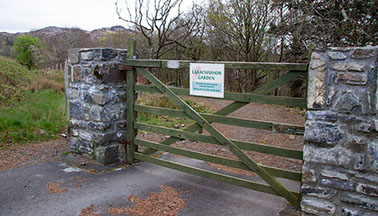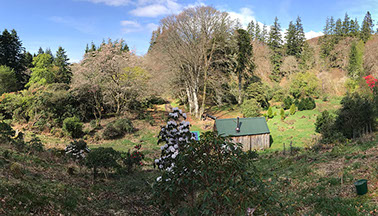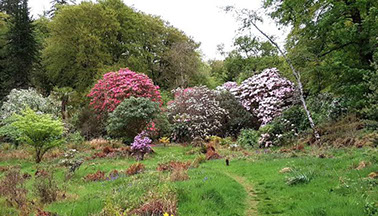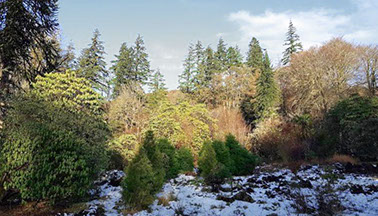LARACHMHOR
| The Wild Woodland Garden |
Home
Visiting & Exploring
Climate & Seasons
The Garden History
Collections & Wildlife
Managing The Garden/Contact
News & Updates
| LARACHMHOR |
The Wild Woodland Garden
The Wild Woodland Garden of Larachmhor lies near the west coast of Lochaber in the Highlands of Scotland. From the late 1920s it proved a favourable setting for an array of exotic plantings undertaken by eccentric entrepreneur John Holms, focussed especially on his beloved rhododendrons. Over the past half century the collections have been further enriched by the ongoing works undertaken by a team of volunteers loosely linked to the Royal Botanic Garden Edinburgh.
The
| GARDEN SETTING |
The Garden has been developed over the past 150 years in a protected bowl of fertile ground, barely a mile from the sea, on the outskirts of the village of Arisaig. Nineteenth century woodland plantings and bands of sheltering conifers, particularly western hemlocks, are complemented by extensive semi-naturalised woodland of oak, birch and alder, with many fine old beeches. This swathe of mixed woodlands afforded exactly the superb shelter John Holms, the founder of the garden, needed for the establishment of the diverse plantings. He sourced these not only from nurseries and fellow landowners, but also direct from some of the great Sino-Himalayan plant hunting expeditions of the time. Since the early 1960s the Garden has been managed by the Larachmhor Garden Association [LGA], a richly mixed volunteer group of professional specialists and enthusiastic amateurs, including several botanists and horticulturists, many of whom were closely linked to the Edinburgh Botanics and its regional garden at Benmore in Argyll.
Their skills and invaluable connections have enabled the LGA, working in concert with the Arisaig Estate, of which Larachmhor is a special part, to tame the encroaching wilderness and to develop the infrastructure for the Garden. Above all they have continued to replace and greatly enhance the exotic plant collections, adding hundreds of new wild origin specimens from ongoing explorations across temperate regions of the globe. Today over 1200 species, including nearly 200 different rhododendrons, flourish in this remarkable sanctuary.
The Arisaig Estate extends north and west from Glen Mama, as it reaches the sea at Loch nan Uamh under the striking railway viaduct, to the village of Arisaig itself, and encompasses most of the beautiful Rhu peninsula. Larachmhor is a private garden, but welcomes responsible visitors, year-round in daylight hours, to enjoy its exquisite wild character and fabulous specimen trees and shrubs.
What's in a name:
There are several variants of the Garden's name. The 1873 six inch map cites Laraiche Moire; this becomes Larichmore on it's 1975 successor. However the recent Inventory of Gardens and Designed Landscapes in Scotland, Supplementary Volume: Highlands and Islands, which includes an entry for the Garden uses Larach Mor (the gaelic standard). The anglicisation of gaelic place names has been a matter of contention for well over a century with southern authors often inventing their own interpretations of the sound of the name, which perhaps explains Larrachmhor and Laraich Mhor which appeared in some later 20th century publications. All documentation between LGA and the estate across the past half century has always deployed Larachmhor.
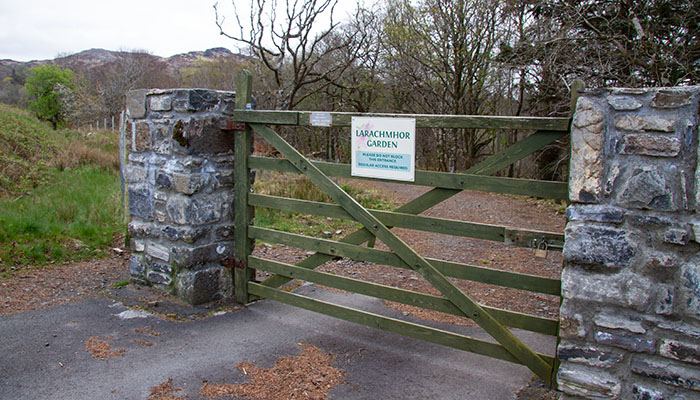
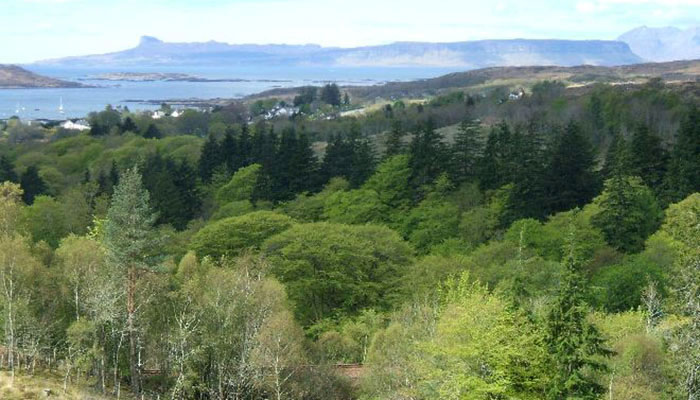
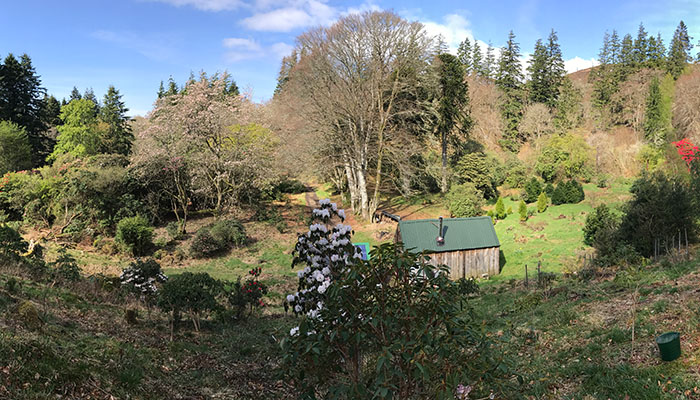


Beneath your feet
| GEOLOGY & SOIL |
Larachmhor sits within the dramatic Lochaber Geopark, which extends from Loch Laggan in the Central Highlands to Ardnamurchan and the Small Isles. The underlying rocks are pelite (fine-grained) schists, belonging to the Moine Supergroup of rocks. Originally laid down as belts of sand and mud in a shallow sea some 1000-900 million years ago, these sedimentary rocks were metamorphosed by the heat and pressure generated during the phases of Caledonian mountain building that upheaved the area north west of the Great Glen, especially around 500-400 million years ago. Under these extreme conditions mineralisation and crystallisation occurred, producing the characteristic gleaming flakes of mica that can be readily seen in the stream bed and other rock exposures around the garden. The southernmost extremities of the garden just reach out into the quartzites that are the basal fabric of all the local western peninsulas, including Rhu, which thrusts westwards beyond the garden.
Progressive weathering of the schists, accelerated by intense grinding when the area was buried beneath the ice sheets that prevailed 22 and again 12 million years ago, has contributed to the good quality soils found around the garden. Massively enriched by centuries of rotted deciduous Atlantic woodland litter, these are mostly fertile and reasonably deep throughout the heart of the site, but lie only thinly on the steeper rocky slopes. Soil pH readings around the garden sit just on the acidic side of neutral, in the range 6.5 (on the slopes or in deep litter zones) to 6.8 (in the central bowl; all well suited to rhododendron cultivation. As in any west coast garden, drainage is vital, and additional channels have to be trenched and kept clear to avoid waterlogging, although the lowest elements of the southern boundary of the garden always remain quite boggy.
The
| IMAGE & VIDEO GALLERY |
EXPLORE
© photography: David Mackinnon / Ian Sinclair / LGA
© text: Alan P Bennell / LGA
© website design: davidmackinnon.co.uk
